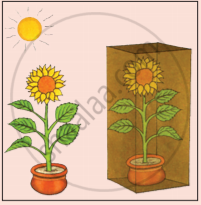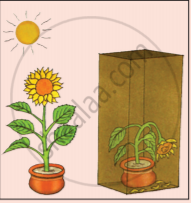Advertisements
Advertisements
प्रश्न
Plants can live without water.
विकल्प
True
False
उत्तर
Plants can live without water- False.
correct statement.
Plants cannot live without water.
APPEARS IN
संबंधित प्रश्न
Explain the following image in your own words.

Explain the following image in your own words.

Fill in the blank by rearranging the letter in the bracket.
_____ is a primary producer (tanpl).
Take two potted plants. Keep one in sunlight and the other in a fully covered box. Water them regularly. After a week observe the plants.
| Before a week | After a week |
 |
 |
| What did you observe? | Plant in sunlight | Plant in box |
Green plants need sunlight.
Why do we call the jasmine plant, a twiner?
One of the following birds is an example of plant pollinator
Comment on the importance of plant-animal interaction.
______ is a natural science concerned with the study of life and living organisms.
The living world comprises plants and animals.
Plants can prepare ______.
What are the uses of plants?
Classify plants on the basis of flowers.
Give some examples of monocotyledonous plants and dicotyledonous plants.
Which of the following combination of features would you observe in grass?
Which of the following is not a correct match?
Match the parts of plant given in Column I with their function in Column II.
| Column I | Column II | ||
| (a) | Flower | (i) | Excretion |
| (b) | Leaf | (ii) | Photosynthesis |
| (c) | Stem | (iii) | Reproduction |
| (d) | Root | (iv) | Bears branches |
| (v) | Anchorage | ||
Solve the crossword given in Figure as per the clues given below it.

Across
1. The term that describes upward movement of water in a stem.
3. The part of leaf which is attached to the stem.
5. This part is attached to the tip of filament.
Down
1. Plants that are weak and spread on the ground.
2. Ovules are present in this part of flower.
4. Is the broad part of leaf.
In vexillary type of aestivation, two lateral petals which overlap the two smallest anterior petals are called ______. This aestivation is characteristic feature of family ______.
